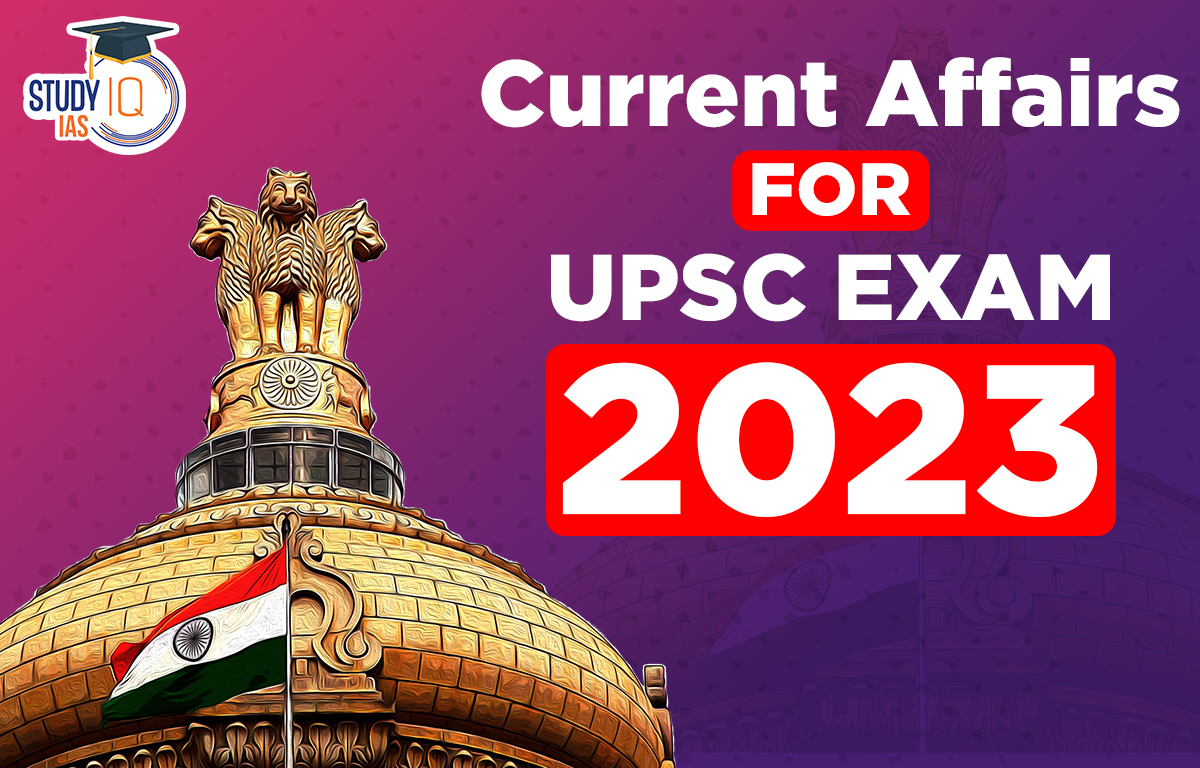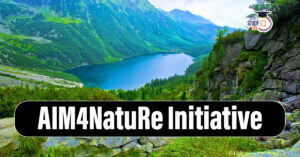Current Affairs 1st May 2023 for UPSC Prelims Exam
Anaemia
Context: A study published in the journal ‘BMJ Nutrition’ found that food fortification using only folate and vitamin B12 may not be sufficient to address the problem of anaemia in women.
What is Anaemia?
- Anemia is a medical condition characterized by a lack of healthy red blood cells or hemoglobin in the blood. Hemoglobin is a protein in red blood cells that carries oxygen from the lungs to the body’s tissues.
- When there are not enough red blood cells or hemoglobin in the blood, the body’s cells do not get enough oxygen, which can cause fatigue, weakness, and other symptoms.
- Children and pregnant women are especially vulnerable, with an increased risk of maternal and child mortality.
- WHO standard: According to the World Health Organization (WHO), women in the reproductive age group and having haemoglobin levels lower than 12 grams per decilitre (g / dL), as well as children under five with haemoglobin levels lower than 11.0 g / dL are considered anaemic.
- Types of anaemia: There are several types of anemia, including:
- Iron-deficiency anemia, which is the most common type and is caused by a lack of iron in the body.
- Vitamin-deficiency anemia, which is caused by a lack of vitamin B12 or folate, and
- Hemolytic anemia, which is caused by the destruction of red blood cells.
- Causal factors: Anemia can be caused by a variety of factors, including poor nutrition, chronic diseases such as kidney disease or cancer, inherited conditions such as sickle cell anemia, and certain medications.
- Treatment: Treatment for anemia depends on the underlying cause and may include iron supplements, vitamin supplements, blood transfusions, or other medical interventions.
- Implications:
- It affects cognitive and physical development in children and reduces productivity in adults.
- Anaemia is an indicator of both poor nutrition and poor health.
- It can also impact other global nutritional concerns such as stunting and wasting, low birth weight and childhood overweight and obesity due to lack of energy to exercise.
- School performance in children and reduced work productivity in adults due to anaemia can have further social and economic impacts for the individual and family.
Prevalence of Anaemia in India and the World
- According to the National Family Health Survey 2019-20, Indian women and children are overwhelmingly anaemic.
- Under phase I, 22 states and UTs were surveyed and in a majority of these states and UTs, more than half the children and women were found to be anaemic.
- WHO estimates that 42% of children less than 5 years of age and 40% of pregnant women worldwide are anaemic.
- Prevalence in Indian men: The Lancet Global Health survey revealed that nearly one in four men (23.2%) in the age group 15-54 years in India were anaemic (mild, moderate, or severe).
- Iron-deficiency anemia is the most common form, making up about 50% of all anemia cases in India.
Government Interventions
- Anaemia Mukt Bharat (AMB): It is a national campaign launched by the Government of India in 2018 with the aim of reducing the prevalence of anaemia among women and children in India through a life cycle approach.
- The campaign aims to increase awareness about anaemia, promote the consumption of iron-rich foods, and provide iron and folic acid supplements to vulnerable groups, such as pregnant women and children.
- Weekly Iron and Folic Acid Supplementation (WIFS): This Programme is being implemented to meet the challenge of high prevalence and incidence of anaemia amongst adolescent girls and boys.
- The intervention under WIFS includes supervised weekly ingestion of Iron Folic Acid (IFA) tablets.
- To control worm infestation, biannual deworming with Albendazole is provided.
- Integrated Child Development Services Scheme (ICDS): Government implements Anganwadi Services, Pradhan Mantri Matru Vandana Yojana and a Scheme for Adolescent Girls under the Umbrella of ICDS as targeted interventions to address the problem of malnutrition in the country.
- POSHAN Abhiyaan: It is a flagship national nutrition mission to improve nutrition among children, pregnant women and lactating mothers.
- Mid-Day Meal Scheme: It is a school meal programme in India designed to better the nutritional standing of school-age children.
- Pradhan Mantri Surakshit Matritva Abhiyan (PMSMA): It has been launched to focus on conducting special ANC check up on 9th of every month with the help of medical officers to detect and treat cases of anaemia.

Current Affairs 29th April 2023 for UPSC Prelims Exam
The National Commission for Scheduled Tribes (NCST)
Context: Recently, National Commission for Scheduled Tribes (NCST) has flagged alleged discrepancies in Forest Rights Act compliance for Great Nicobar Project.
About the National Commission for Scheduled Tribes (NCST):
Background:
- NCST was set up in 2004 by amending Article 338 and by inserting a new Article 338A in the Constitution through the 89th Constitution Amendment Act, 2003. Hence, it is a constitutional body.
- By the 89th amendment, the erstwhile National Commission for Scheduled Castes and Scheduled Tribes was replaced by two separate Commissions namely;
- The National Commission for Scheduled Castes (NCSC)
- The National Commission for Scheduled Tribes (NCST)
- Composition: It consists of a Chairperson, a Vice-Chairperson, and 3 other Members who are appointed by the President by warrant under his hand and seal.
- At least one member should be a woman.
- The Chairperson, the Vice-Chairperson, and the other Members hold office for a term of 3 years.
- The Chairperson has been given the rank of Union Cabinet Minister, the Vice Chairperson has the rank of a Minister of State and other Members have the rank of Secretary to the Government of India.
- The members are not eligible for appointments for more than two terms.
- Powers and Functions
- The Commission is vested with all the powers of a civil court while investigating any matter on the inquiry of any complaint relating to deprivation of rights and safeguards for Scheduled Tribes.
- To investigate & monitor matters relating to Safeguards provided for STs under the Constitution or under other laws or under Government order, to evaluate the working of such Safeguards.
- To inquire into specific complaints with respect to the deprivation of rights and safeguards of the Scheduled Tribes.
- To participate and advise on the planning process of socio-economic development of the Scheduled Tribes and to evaluate the progress of their development under the Union and any State.
- The Commission presents an annual report to the President. The President places all such reports before the Parliament, along with a memorandum explaining the action taken on the recommendations made by the Commission.
- The President, subject to the provisions of any law made by Parliament, may, by rule, discharge any other functions relating to the protection, welfare, development, and advancement of the STs.
Forest Rights Act:
- The Forest Rights Act (FRA), 2006 recognizes the rights of the forest-dwelling tribal communities and other traditional forest dwellers to forest resources, on which these communities were dependent for a variety of needs, including livelihood, habitation and other socio-cultural needs.
- The Act encompasses Rights of Self-cultivation and Habitation which are usually regarded as Individual rights; and Community Rights as Grazing, Fishing and access to Water bodies in forests, Habitat Rights for PVTGs etc.
- It also provides rights to allocation of forest land for developmental purposes to fulfill basic infrastructural needs of the community.
Great Nicobar Island Project:
- The Great Nicobar Island (GNI) Project is a mega project to be implemented at the southern end of the Andaman and Nicobar Islands.
- The project includes an international container transshipment terminal, a greenfield international airport, township development, and a 450 MVA gas and solar based power plant over an extent of 16,610 hectares in the island.
Great Nicobar
- Great Nicobar is the southernmost island of the Nicobar Islands Archipelago.
- Indira Point, earlier known as Pygmalion Point, lies at the tip of the Great Nicobar Island and is the southernmost point of the country.
- Flora & fauna:
- The Great Nicobar Island has tropical wet evergreen forests, mountain ranges reaching almost 650 m above sea level, and coastal plains.
- Protected area: Great Nicobar is home to two national parks and a biosphere reserve.
- Inhabitants: The island is inhabited by the Shompen and Nicobarese tribal peoples, along with ex-servicemen from Punjab, Maharashtra, and Andhra Pradesh who were settled on the island in the 1970s.

Zero Trust Architecture
Context: According to few experts, ‘Zero trust’ architecture will be the cornerstone of data security in India.
About Zero Trust Architecture
- It is a security framework requiring all users in and outside the network of an organisation to be security checked, authenticated, authorised, and validated before being granted physical or virtual access to an enterprise, its systems, applications and datapool.
- It is a strategic approach to cybersecurity that secures an organization by eliminating implicit trust and continuously validating every stage of a digital interaction
- The term, originally coined by John Kindervag, runs on the principle of ‘Never Trust, Always Verify’.
- It requires strict verification of any device or person trying to access information on a private network inside or outside of a network perimeter.
- Principles of Zero Trust
- All entities are untrusted by default
- Least-privilege access is enforced
- Constant security monitoring is implemented
Advantages of Zero Trust Architecture
- Eliminates use of VPN: Since users are required to verify their identity at each step, the solution also removes the need for VPNs.
- Increased productivity: A Zero Trust security model can significantly accelerate productivity of an organisation by allowing teams to work from anywhere since digital assets and other credentials are at a lesser risk of being harmed.
- Transparency: The model can specifically help in tracking unusual behaviour in the assets being accessed at an early stage, which increases transparency and mitigates data breaches.
- Data protection and authenticity: The solution asks for verification at every step, which keeps data safe from being stolen or harmed.
- Greater reliability: Zero Trust runs on the principle ‘Trust No One and Nothing’, so the person or device is asked for verification before gaining access to a resource.
- This increases the reliability of the data that is being accessed as no alterations can be made without verification.
NATGRID
Context: National Intelligence Grid (NATGRID) is ready to scale up surveillance by offering real-time 360 degree profiling of individuals and other entities to authorised Central and State agencies for intelligence gathering and law enforcement purposes.
About NATGRID
- It is an attached office of the Ministry of Home Affairs that has been created as an IT platform to assist the intelligence and law enforcement agencies in ensuring national and internal security, with the ultimate aim of counter-terror.
- Origin: The 26/11 terrorist siege in Mumbai back in 2008 exposed the deficiency that security agencies had no mechanism to look for vital information on a real-time basis.
- C-DAC Pune is a Technology Partner and IIT, Bhilai as Plan Management Consultant for the development of the NATGRID solution.
- It is conceptualized as a seamless and secure database for information on terrorists, economic crimes and similar incidents to help bolster India’s capabilities.
- The NATGRID has been envisaged as a robust mechanism to track suspects and prevent terrorist attacks with real-time data and access to classified information like immigration, banking, individual taxpayers, air and train travels.
- It will have access to the Crime and Criminal Tracking Network and Systems (CCTNS), a database that links crime information, including First Information Reports, across 14,000 police stations in India.

National Green Tribunal (NGT)
Context: National Green Tribunal (NGT) has expressed its displeasure over the delay in the removal of the burnt waste, plastic, ash and refused derived fuel (RDF) from the dump yard of the Kochi Corporation in Brahmapuram.
About National Green Tribunal (NGT)
- It is a specialised judicial body set up under the National Green Tribunal Act (2010) for effective and expeditious disposal of cases relating to environmental protection and conservation of forests and other natural resources.
- Structure: NGT comprises of the Chairperson, the Judicial Members and Expert Members.
- They shall hold office for term of five years and are not eligible for reappointment.
- NGT is mandated to make disposal of applications or appeals finally within 6 months of filing of the same.
- In October 2021, the Supreme Court ruled that the National Green Tribunal (NGT) had the authority to address environmental matters countrywide as a “unique” forum with suo motu (on its own initiative) authority.
- The NGT deals with civil cases under the seven laws related to the environment, these include:
- The Water (Prevention and Control of Pollution) Act, 1974,
- The Water (Prevention and Control of Pollution) Cess Act, 1977,
- The Forest (Conservation) Act, 1980,
- The Air (Prevention and Control of Pollution) Act, 1981,
- The Environment (Protection) Act, 1986,
- The Public Liability Insurance Act, 1991
- The Biological Diversity Act, 2002
- Powers: An order/decision/award of Tribunal is executable as a decree of a civil court. Decisions of the Tribunal are binding.
- The Tribunal has powers to review its own decisions.
- If this fails, the decision can be challenged before the Supreme Court within ninety days.
PC&PNDT Act
Context: The Delhi High Court has remarked that certain aspects of the Pre-Conception & Pre-Natal Diagnostic Techniques (Prohibition of Sex Selection) (PC & PNDT) Act need reconsideration for effective implementation of the Act.
About PC& PNDT Act
- Pre-Conception and Pre-Natal Diagnostic Techniques (PCPNDT) Act, 1994 is an Act of the Parliament of India sanctioned to stop female foeticides and capture the declining sex ratio in India.
- Objective: To prevent the misuse of sex determination for sex-selective abortion.
- It banned pre-natal sex determination.
- It provides for the prohibition of sex selection, before or after conception.
- It regulates the use of pre-natal diagnostic techniques, like ultrasound and amniocentesis.
- 2003 Amendment: The act was amended in 2003 to improve the regulation of the technology used in sex selection.
- To bring the technique of pre conception sex selection and ultrasound technique within the ambit of the act.
- Empowered the central supervisory board and state level supervisory board was constituted.
Postulate of PC& PNDT Act
- No laboratory or clinic will conduct any test including ultrasonography for the purpose of determining the sex of the foetus.
- No person, indulged in conducting the procedure as per the law, will communicate the sex of the foetus to the pregnant woman or her relatives by words, signs or any other method.
- Each Ultrasound clinic, Genetic Counselling Centre, Genetic Laboratory, Genetic Clinic and Imaging Centre would have to maintain all the mandatory records on a day to day basis, as prescribed under the Law.
- Compulsory registration: The Act mandates compulsory registration of all diagnostic laboratories, all genetic counseling centres, genetic laboratories, genetic clinics and ultrasound clinics.
- Offence: Any person who puts an advertisement for pre-natal and pre-conception sex determination facilities in any form, can be imprisoned up to three years and fined up to Rs. 10,000.
Insurance Regulatory and Development Authority of India (IRDAI)
Context: Insurance Regulatory and Development Authority of India (IRDAI) has asked insurance companies to lay down social media guidelines for their employees to ensure that no unverified or confidential information related to the organisation is disseminated to the public through these platforms.
About IRDAI
- The Insurance Regulatory Development Authority of India (IRDAI) is a regulatory body created with the aim of protecting the policyholder’s interest.
- IRDAI was established in the year 1999, deriving its powers and functions from the IRDAI Act, 1999 and Insurance Act, 1938.
- It is a Statutory Body.
- IRDAI works as an autonomous body responsible for managing and regulating the insurance and reinsurance industry in India along with registering and/or licensing insurance, reinsurance companies and intermediaries according to the regulations.
- Mission: It regulates and sees to the development of the insurance industry.
Purposes
- To protect the interest of the policyholders.
- To regulate and promote the orderly growth of the insurance and reinsurance industry.
- To ensure speedy claim settlement and prevent Insurance frauds and other malpractices.
- To better the standards of insurance markets.
Powers and functions of IRDAI in the Insurance Industry
- Efficiently conducting insurance business and protecting the interests of the policyholders in matters concerning assigning of policy, nomination by policyholders, insurable interest, settlement of insurance claim, surrender value of the policy and other terms and conditions of contracts of insurance.
- Approving product terms and conditions offered by various insurers.
- Regulating investment of funds by insurance companies and maintaining a margin of solvency.
- Specifying financial reporting norms of insurance companies.
- Ensuring insurance coverage is provided in the rural areas and also to the vulnerable sections of society.
Declining Population of Asian Elephant
Context: Habitats suitable for Asian elephants across Asia have decreased by over 64% equating to 3.3 million square kilometers of land since 1700, estimates a recent study
About Asian Elephants:
- There are three subspecies of Asian elephant which are the Indian, Sumatran and Sri Lankan.
- The elephant herd is led by the oldest and largest female member (known as the matriarch). This herd includes the daughters of the matriarch and their offspring.
- Females between 14 – 45 years may give birth to calves approximately every four years with the mean inter-birth intervals increasing to five years by age 52 and six years by age 60. Global Population: Estimated 20,000 to 40,000.
Status of Elephants in India:
- The Indian subspecies has the widest range and accounts for most of the remaining elephants on the continent. India has about 27,000 Asian Elephants, which is the world’s largest population of the species.
- As per Elephant Census (2017), Karnataka has the highest number of elephants (6,049), followed by Assam (5,719) and Kerala (3,054). More than 60% of the world’s elephant population is in India. The elephant is the Natural Heritage Animal of India
Protection Status: Elephants are included under IUCN Red List: Endangered, Wildlife (Protection) Act, 1972: Schedule I, CITES: Appendix I
- Threats: Reports suggest that China, India, Bangladesh, Thailand, Vietnam, and Sumatra have each lost more than half of their suitable elephant habitat range, with the greatest declines in China (around 94%) and India (around 86%). Major threats include Escalation of poaching, habitat loss., human-elephant conflict, mistreatment in captivity, abuse due to elephant tourism, Rampant mining, Corridor destruction
Project Elephant
| Launch year | 1992 |
| Type | Centrally-sponsored scheme |
| Aim | To protect elephants and improve their habitat and corridors, reduce human-elephant conflict |
| Elephant reserves | 33 elephant reserves have been notified (Terai ER in Utter Pradesh became 33rd India’s ER); 101 elephant corridors identified |
| Objectives |
|


 Freedom of Press in India, Constitutiona...
Freedom of Press in India, Constitutiona...
 Deputy Speaker of Lok Sabha, Constitutio...
Deputy Speaker of Lok Sabha, Constitutio...
 AIM4NatuRe Initiative for Nature Restora...
AIM4NatuRe Initiative for Nature Restora...





















